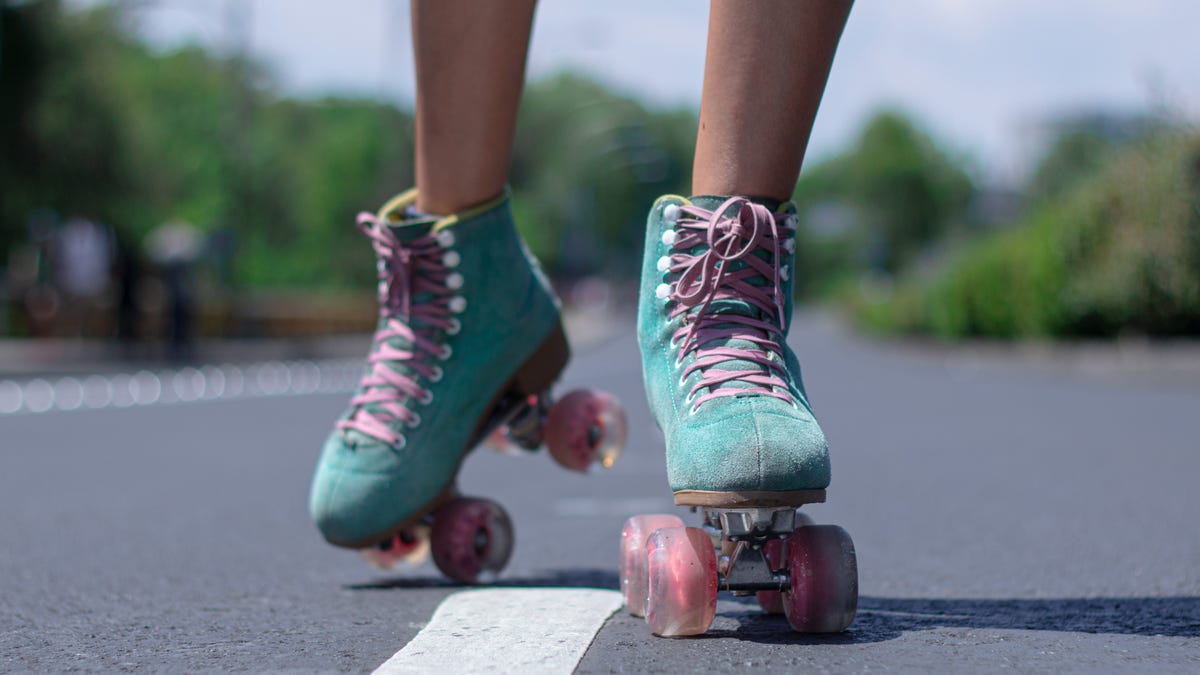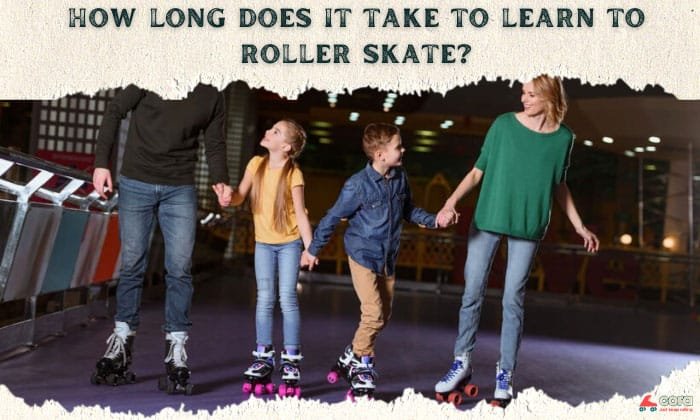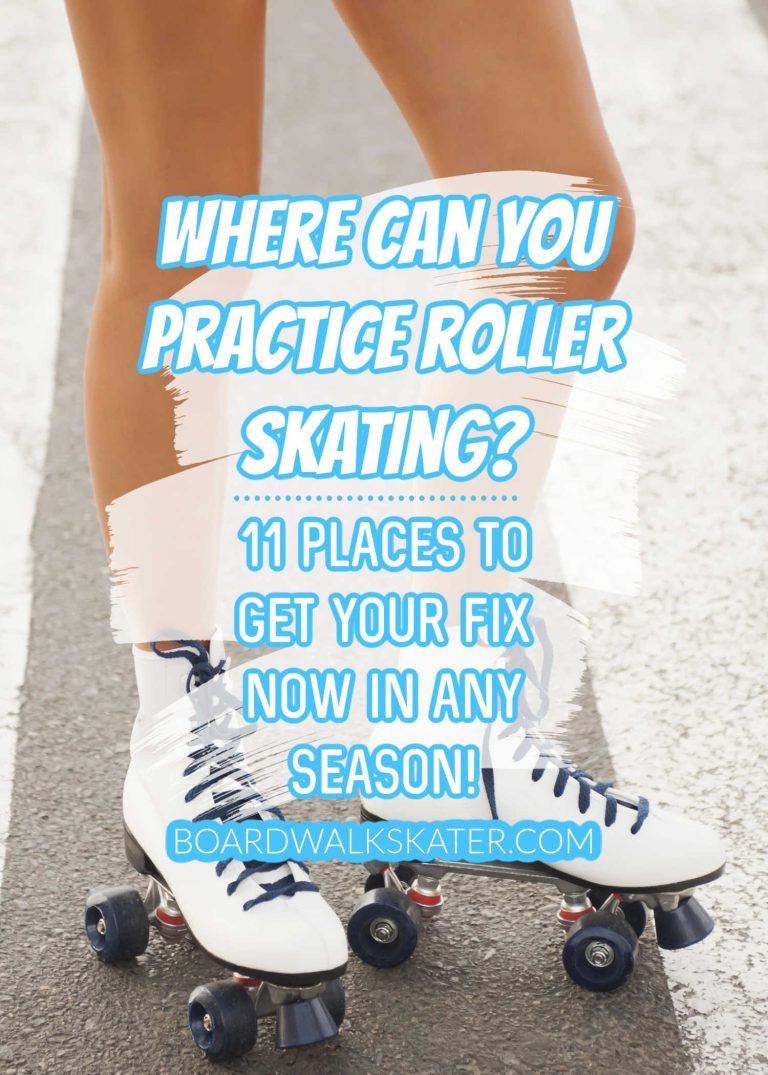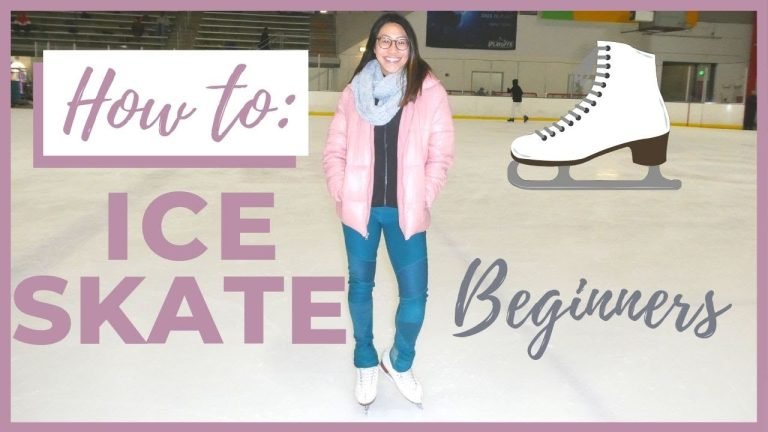How Long Does It Take To Learn To Roller Skate
It takes an average of 10-20 hours to learn to roller skate. Roller skating is a fun and exhilarating activity that can be enjoyed by people of all ages and skill levels.
Whether you are a complete beginner or have some experience with other sports, learning to roller skate can be a rewarding and fulfilling journey. The amount of time it takes to become proficient at roller skating can vary depending on various factors such as your natural ability, physical fitness, and dedication to practice.
On average, it can take anywhere from 10 to 20 hours of practice to feel comfortable and confident on roller skates. With regular practice and proper technique, you can improve your skills and enjoy the thrill of roller skating in no time.
The Basics Of Roller Skating
Learning to roller skate can vary depending on the individual, but with consistent practice and determination, many people can become confident skaters within a few weeks. The key is to start with the basics and gradually build up your skills, focusing on balance and technique.
Are you eager to learn how to roller skate? Whether you’re a complete beginner or have some experience, getting familiar with the basics is essential. In this section, we’ll explore the key aspects of roller skating, including the equipment you’ll need, basic techniques, and essential safety tips.
So, let’s dive in and discover the exhilarating world of roller skating!
Introduction To Roller Skating
Roller skating has been a popular recreational activity for decades, attracting people of all ages. From gliding gracefully on the rink to performing impressive tricks, roller skating offers a wide array of possibilities. Before we delve into the details, let’s get acquainted with the essential elements of roller skating:
- Roller skates: These are specially designed boots with wheels affixed to the bottom. They come in various styles, including quad skates and inline skates, offering different levels of stability and maneuverability.
- Protective gear: Ensuring your safety is crucial, so make sure to wear a helmet, knee pads, elbow pads, and wrist guards. These protective gears will shield you from potential injuries.
- Skating surface: Choose a smooth and even surface to practice your roller skating skills. Indoor roller rinks, outdoor skate parks, or smooth pavements are ideal options.
Benefits Of Learning To Roller Skate
Apart from sheer fun, roller skating offers numerous benefits for your mind and body. Here are some compelling reasons why you should consider learning to roller skate:
- Physical fitness: Roller skating is a fantastic aerobic exercise, helping you burn calories, improve cardiovascular health, and build stronger muscles, particularly in the lower body.
- Coordination and balance: Balancing on wheels while skating requires coordination between different muscle groups, aiding in the development of balance and spatial awareness.
- Stress relief: Engaging in roller skating allows you to escape the stresses of daily life and experience an adrenaline rush. The rhythmic motion and focus required can also have a calming effect on the mind.
- Social interaction: Roller skating is a fantastic social activity that brings people together. Joining roller skating classes or participating in roller skating events can introduce you to like-minded individuals and enhance your social circle.
- Confidence booster: As you make progress in roller skating and master new skills, your self-confidence will naturally increase. Overcoming challenges and pushing your boundaries will help you build a strong sense of achievement.
Now that you have a clear understanding of the basics and the benefits of roller skating, you’re ready to strap on your skates and hit the rink. Keep in mind that it takes practice, determination, and the willingness to learn from falls and mistakes.
So, let’s unleash the skater within you and embark on an exciting roller skating journey!
Learning Roller Skating Techniques
Learning roller skating techniques can vary in terms of time and individual skills. Some may grasp the basics in a few weeks, while others may take months to become proficient. Patience and consistent practice are key in mastering roller skating.
Roller skating is a thrilling and enjoyable activity that can provide hours of entertainment. If you’re new to roller skating, learning the right techniques is essential. In this section, we will guide you through the process of choosing the right roller skates, ensuring a proper fit and adjustment, and mastering the basic roller skating stance and balance.
Choosing The Right Roller Skates
- Consider your skating style: Determine whether you intend to skate indoors or outdoors, as different skates are designed for specific surfaces.
- Boot type: Decide between low-top and high-top boots based on your ankle support preferences.
- Wheels: Choose the appropriate wheels for your skating environment and skill level. Softer wheels provide better grip for indoor skating, while harder wheels are recommended for outdoor surfaces.
- Bearings: Opt for high-quality bearings that offer a smooth and effortless skating experience.
Proper Fitting And Adjustment Of Roller Skates
- Measure your foot: Use a tape measure to determine the length and width of your foot accurately. Refer to a sizing chart provided by the manufacturer to find your ideal skate size.
- Try before buying: Visit a reputable skate shop and try on different brands and models to find the perfect fit. Ensure that your toes have some wiggle room and that your heel is secure.
- Lace it up: Properly tighten your skate’s laces, starting from the toes and moving towards the top of the boot. This will provide stability and prevent shifting while skating.
- Adjust your trucks: Ensure that the trucks—the part of the skate that holds the wheels—are neither too loose nor too tight. Find the right balance to allow for smooth turns and steady control.
Basic Roller Skating Stance And Balance
To begin your roller skating journey, focusing on mastering the basic stance and establishing good balance is crucial. Follow these steps:
- Keep your feet shoulder-width apart, with your toes pointing slightly outwards.
- Bend your knees and maintain a slight forward lean.
- Keep your head up and look forward, rather than down at your feet.
- Distribute your weight evenly on both skates.
- Engage your core muscles for stability and balance.
- Practice shifting your weight from one foot to the other, gradually increasing your speed and confidence.
By prioritizing the correct roller skating techniques, you’ll be on your way to becoming a confident skater. Remember, practice makes perfect, so get out there and have fun while developing your skills. Happy skating!
Progression In Roller Skating Skills
Learning to roller skate is a unique journey that varies for each individual. With consistent practice and dedication, it can take anywhere from a few weeks to several months to develop proficient roller skating skills.
Mastering Basic Skating Movements:
Roller skating is a thrilling activity that can be learned at any age. When you first start, it may feel a bit challenging to glide smoothly, but with practice, you will quickly become comfortable on your skates. Here are some key skills to focus on while mastering the basics of roller skating:
- Balancing: Maintaining balance on your skates is crucial. Practice standing still and moving in a straight line while keeping your weight centered.
- Striding: Learn how to push off with one foot while keeping the other foot steady. This will help you build momentum and move forward smoothly.
- Glide: As you gain confidence, practice gliding on each foot individually by lifting it slightly off the ground and coasting forward.
- Stopping: Discover different stopping techniques, such as the T-stop or plow stop. These methods will allow you to come to a controlled and safe stop.
Turning And Changing Direction:
Once you have a good grasp of the basic skating movements, it’s time to explore turning and changing direction. This will add fluidity and agility to your roller skating skills. Consider the following techniques:
- Parallel turns: Practice making smooth turns by crossing one foot in front of the other while leaning in the direction you want to turn. This will help you change direction efficiently.
- Crossovers: Master the art of crossovers by crossing one foot over the other in a fluid motion. This technique enables you to navigate turns with increased speed and stability.
- Backward skating: Familiarize yourself with backward skating to enhance your overall control and balance. Start by practicing short glides and gradually progress to longer distances.
Speed Control And Stopping Techniques:
As your roller skating skills improve, it’s essential to learn speed control and various stopping techniques to ensure your safety and optimize your experience. Consider the following methods:
- Plow stop: To execute a plow stop, bend your knees and point your toes inward while pushing your heels outward. This motion creates friction and slows you down.
- Power slide: Power slides are advanced techniques used to come to a sudden stop while skidding sideways. They require practice and should only be attempted once you have built confidence in your skating ability.
- Emergency stops: In emergency situations, being able to stop promptly is crucial. Practice a combination of techniques such as T-stops, plow stops, and power slides to enhance your stopping abilities.
Remember, mastering roller skating skills takes time and practice. The more you skate, the better you will become. Enjoy the learning process, stay persistent, and have fun exploring the world of roller skating!

Credit: lifehacker.com
Practice And Consistency In Roller Skating
Learning to roller skate requires practice and consistency. The time it takes to become proficient can vary depending on individual effort and dedication. With regular practice, one can develop skills and confidence on wheels.
Roller skating is a fun and exciting activity that allows you to glide gracefully or perform thrilling tricks on wheels. Whether you’re a beginner or looking to improve your roller skating skills, practice and consistency are vital in mastering this thrilling sport.
In this section, we will explore the importance of regular practice, creating a structured practice routine, and setting goals to track your progress.
Importance Of Regular Practice:
Consistency is key when it comes to learning roller skating. By practicing regularly, you can improve your balance, coordination, and overall control while on wheels. Here are a few reasons why regular practice is essential:
- Muscle memory: Regular practice helps your muscles remember the movements and positions required for roller skating, making them more automatic and improving your overall performance.
- Building confidence: Continuous practice allows you to gain confidence in your abilities and tackle more challenging skating techniques without hesitation.
- Strengthening skills: The more you practice, the stronger your roller skating skills will become. Consistent training helps you refine your techniques, footwork, and transitions, leading to smoother movements on the rink.
- Improving stamina: Roller skating requires physical endurance, and regular practice helps improve your stamina, allowing you to skate for longer periods without exhaustion.
Creating A Structured Practice Routine:
To make the most of your roller skating practice sessions, it’s important to develop a structured routine that focuses on different aspects of your skating skills. Here’s how you can create an effective practice routine:
- Warm-up: Begin with dynamic warm-up exercises to prepare your body for skating and reduce the risk of injury.
- Skill-specific drills: Dedicate time to practice specific skills such as crossovers, backward skating, transitions, turns, and stopping techniques. By breaking down the skills and focusing on each one separately, you can master them more effectively.
- Freestyle sessions: Allot some time to freestyle skating, allowing yourself to experiment with different moves, tricks, and transitions. This helps in enhancing your creativity and improvisation skills on wheels.
- Strength and conditioning: Incorporate strength and conditioning exercises into your routine to improve your core stability, leg strength, and overall fitness. This will contribute to your stability and control while roller skating.
- Cooldown and stretching: After each practice session, take some time to cool down your body and perform stretching exercises to prevent muscle tightness and promote flexibility.
Setting Goals And Tracking Progress:
Setting goals is an effective way to motivate yourself and measure your progress in roller skating. By tracking your achievements, you can celebrate milestones and stay motivated to keep pushing your limits. Here are some tips on setting goals and tracking your progress:
- Short-term and long-term goals: Set both short-term and long-term goals to keep your roller skating journey exciting and rewarding. Short-term goals can be accomplished within a few weeks or months, while long-term goals may take several months or even years.
- Specific and measurable goals: Make your goals clear, specific, and measurable. For example, instead of setting a vague goal like “improve skating skills,” aim for a specific skill, such as mastering crossovers or executing a certain trick.
- Record and review your progress: Keep a journal or use a skating app to track your daily or weekly progress. Note down the skills you practiced, the challenges you faced, and any improvements you observed. Reviewing your progress helps you stay motivated and identify areas for improvement.
- Celebrate milestones: When you achieve a goal or make significant progress, don’t forget to celebrate! Treat yourself to something special or reward yourself with a new skating accessory. Celebrating milestones keeps you motivated and excited for your next skating adventure.
Remember, practice and consistency are the keys to success in roller skating. By dedicating regular practice time, creating a structured routine, and setting goals to track your progress, you’ll gradually become a skilled and confident roller skater. Lace up your skates, hit the rink, and let the practice sessions propel you towards roller skating excellence!
Challenges And Tips For Learning Roller Skating Faster
Learning roller skating faster can be challenging, but with these tips, you can speed up the process. By practicing regularly, focusing on balancing, staying confident, and seeking professional guidance, you can reduce the time it takes to become a proficient roller skater.
Learning how to roller skate can be an exciting and challenging journey. If you’re wondering how long it takes to become proficient in this activity, the answer can vary depending on factors like your dedication, coordination, and overall willingness to push through difficulties.
In this blog post, we will explore the challenges individuals often face while learning roller skating and provide tips to help you expedite your progress.
Overcoming Fear And Building Confidence
- Fear of falling: Roller skating can be intimidating because of the fear of falling. However, overcoming this fear is crucial in learning how to roller skate faster. Here are some tips:
- Wear protective gear: Investing in knee pads, elbow pads, and a helmet will help you feel more secure and confident during your roller skating journey.
- Start slow: Begin with smaller strides and practice maintaining balance. As you become more comfortable, gradually increase your speed and widen your strides.
- Find a supportive environment: Skating in a safe and controlled setting, such as an indoor roller skating rink or an empty parking lot, can help build your confidence.
- Lack of confidence: Building self-assurance is essential when learning roller skating. Here’s how you can boost your confidence:
- Focus on small victories: Acknowledge and celebrate even the smallest accomplishments, such as successfully staying balanced for an extended period or smoothly executing a turn.
- Visualize success: Imagine yourself gliding effortlessly on the roller skates and envision yourself mastering different moves. Positive visualization can go a long way in boosting your confidence.
Common Mistakes And How To Avoid Them
- Poor body posture: Maintaining the correct body posture is vital for stability and control. Here are some common mistakes to avoid:
- Bending forward: Leaning too far forward can throw off your balance. Instead, keep your back straight and slightly lean forward from the ankles.
- Stiffness: Being tense while roller skating can hinder your progress. Relax your body, bend your knees, and allow for fluid movements.
- Looking down: Avoid the temptation to constantly look down at your skates. Keep your gaze forward, focusing on your surroundings and maintaining balance.
- Neglecting proper technique: Learning the correct roller skating techniques can significantly accelerate your progress. Avoid these mistakes:
- Neglecting weight distribution: Distribute your weight evenly between both feet to maintain balance and improve control.
- Skipping skill progression: It’s important to start with the basics and progressively learn more advanced moves. Skipping steps may result in incomplete skill development and potential accidents.
Getting Professional Instruction And Guidance
- Enrolling in skating classes: Seeking professional instruction from experienced roller skating instructors can accelerate your learning process. Consider joining a skating class or hiring a personal coach who can provide valuable guidance and tailor the lessons according to your skill level.
- Group skating sessions: Joining group skating sessions or clubs can offer a supportive and motivating environment where you can learn from others, exchange tips, and challenge yourself.
Remember, learning roller skating takes time and practice. Embrace the challenges, stay consistent, and be patient with yourself. With dedication and the right mindset, you’ll be cruising around on your roller skates in no time!
How Long Does It Take To Learn Roller Skating?
Roller skating can be learned at different paces depending on individual factors such as coordination and practice time. While some may become proficient in a few weeks, it may take others several months to feel comfortable on skates. Stick with it and you’ll see progress in no time!
Skating is a fun and exhilarating activity that many people enjoy, but how long does it take to learn roller skating? The answer to this question can vary depending on a few factors. In this section of the blog post, we will explore the different factors that influence the learning time for roller skating, the typical timeframes for different skill levels, and personal experiences and testimonials.
Factors That Influence Learning Time:
- Balance and coordination: Roller skating requires a good sense of balance and coordination. If you are naturally balanced and have good coordination, you may pick up roller skating more quickly.
- Previous experience: If you have experience with other similar activities like ice skating or inline skating, you may find it easier to learn roller skating.
- Physical fitness: Your overall physical fitness can also play a role in how quickly you learn roller skating. Being physically fit can help you develop the necessary strength and endurance for skating.
Typical Timeframes For Different Skill Levels:
- Beginner level: For beginners who have never skated before, it can take a few sessions to feel comfortable on skates and learn the basic techniques like stopping and turning. This may take anywhere from a few days to a few weeks, depending on individual progress and practice frequency.
- Intermediate level: Once you have mastered the basics, you can move on to more advanced techniques like skating backwards, jumping, and performing tricks. It may take a few months to a year of regular practice to reach this level.
- Advanced level: Advanced roller skaters have honed their skills and are capable of performing complex tricks and maneuvers. Achieving this level may take several years of dedicated practice and training.
Personal Experiences And Testimonials:
- Many individuals have shared their experiences of learning roller skating, highlighting the challenges they faced and how long it took them to become proficient skaters.
- Some individuals reported that it took them a couple of weeks of regular practice to feel comfortable on skates and start enjoying the activity.
- Others mentioned that it took them a few months of consistent practice to gain confidence and improve their skills.
Remember, everyone’s learning journey is unique, and the time it takes to learn roller skating can vary from person to person. The key is to be patient, practice regularly, and enjoy the process of learning and improving.
Frequently Asked Questions For How Long Does It Take To Learn To Roller Skate
How Long Does It Take To Learn To Roller Skate?
Learning to roller skate can vary based on individual factors, but on average, it takes about 10-20 hours of practice to become comfortable and proficient. Progress can be accelerated with proper instruction, consistent practice, and wearing proper safety gear. Remember, everyone learns at their own pace, so be patient and enjoy the journey!
What Are Some Tips For Learning To Roller Skate?
To make your roller skating journey smoother, start by finding a flat and smooth surface to practice on, such as a parking lot or indoor rink. Lace up your skates snugly, maintain a balanced stance, and bend your knees slightly.
Focus on pushing off with one foot at a time and using your arms for balance. Don’t forget to wear protective gear and practice regularly to improve your skills.
Is Roller Skating Hard For Beginners?
Roller skating can be challenging for beginners at first, as it requires balancing on wheels and coordinating body movements. However, with practice and determination, anyone can learn to roller skate. Start with basic techniques, such as maintaining balance and proper foot positioning, and gradually build your skills.
Remember to be patient and take it one step at a time. You’ve got this!
Conclusion
The time it takes to learn to roller skate can vary greatly from person to person. While some individuals may pick up the basics in just a few sessions, others may require more time and practice to feel confident on their skates.
It’s important to remember that everyone learns at their own pace and to not compare your progress to others. Patience, perseverance, and consistent practice are key in developing your roller skating skills. To expedite the learning process, it can be helpful to take lessons from a qualified instructor or join a roller skating club or group.
They can provide guidance, support, and valuable tips to help you improve faster. Additionally, investing in the right equipment, such as well-fitting skates and protective gear, can enhance your learning experience and prevent injuries. Remember, learning to roller skate is a journey, not a race.
Enjoy the process, have fun, and celebrate every milestone and achievement along the way. With dedication and determination, you’ll be gliding and spinning confidently on your roller skates before you know it!





